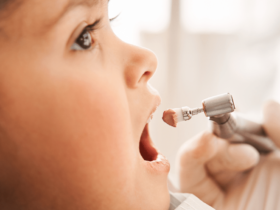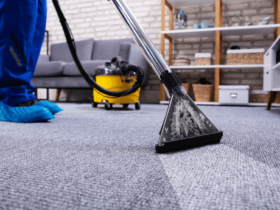When your child is between 2 and 3 years of age, it is best to help him brush his teeth, until he acquires the appropriate level of motor coordination and pays attention to the details in this type of tasks related to hygiene. Here are some great tips for teaching some brushing precautions and methods which are beneficial for your child.
3Tips on teaching brushing techniques to children:
1.Introduce him to the brushing technique closely:
To teach him/her to brush his teeth, you can simply give him a hand on brushing by making him sit on your lap, and rest his head on your arm, so you can brush his teeth properly.
After a while and when the child is ready, let him do it by himself, even if you are behind supervising him. Choose a soft-bristled toothbrush,child-sized with a handle designed so that the child can hold the brush comfortably in your hand, and use a small amount of toothpaste for children, making sure it rinses properly after brushing.
Also, you should start brushing the interior surfaces of all the teeth, with circular movements, short and soft, and especially the line of these with the gums, which is where more plaque accumulates.
You can also consult a child dentist if you want. Try to teach him to clean the surface which is facing outside of the teeth, the surface of chewing them, without forgetting the surface of the tongue.
2. Make some compulsory rules to follow on dental care:
Establishoral cares for the whole family, brushing together twice a day, especially before going to bed, for two or three minutes at a time, so as to encourage tooth brushing for everyone. Make it fun and put on your favorite song while the whole family brushes around the same time the song lasts.
Itis very important that you schedule a dental check-up for your child, take him to the nearest kids dental care. Get the guidance and have correct oral hygiene by getting advice on the child’s essential dental care.
Parents must guide him and teach him the correct form. It will help a lot to brush your teeth with him so he can see how it is done.
When your child is brushing teeth, it is important for him to clean the areas and surfaces for the teeth with a movement of back and forth. Brushing should be done following the axis of the teeth, rubbing lightly the area of the gums. Do not forget the bottom teeth and before finishing making sure of having no food residue left is the best idea.
3.Teach him to maintain toothbrush hygiene:
The brush is not a toy. Do not let your son or daughter put it in their mouths. The toothbrush is not shared. Yes, we know that you love your partner very much, but everyone has a toothbrush and that, from hygiene, is non-negotiable.
Although we keep them in the same vessel or continent, we will avoid direct contact between sows. If we use the hood for the brush we will make sure that it has holes for perspiration.
Disinfection of the toothbrush is highly recommended, especially after going through oral infection. We will not keep it moist in places where humidity is plentiful. It is recommended to dry it a little.
The teething process is fundamental to the growth of the child. Healthy teeth are essential to chew, pronounce clearly and even show a good smile.
The teething process is fundamental to the growth of the child. Healthy teeth are essential to chew, pronounce clearly and even show a good smile. It is advisable to change the brush every three months, or when the filaments wear out. If the brushing process becomes complicated, a good alternative is to use electric brushes for children, which are specially designed and do not need manual dexterity. Also, some pediatric dentists recommend them because they reduce plaque and gingivitis.
Parents play an extremely important role in the oral health of their child, as they are responsible for infusing the routines of cleaning and care of the teeth. Also, during the first year, they have to teach him how to brush.








Leave a Reply
View Comments